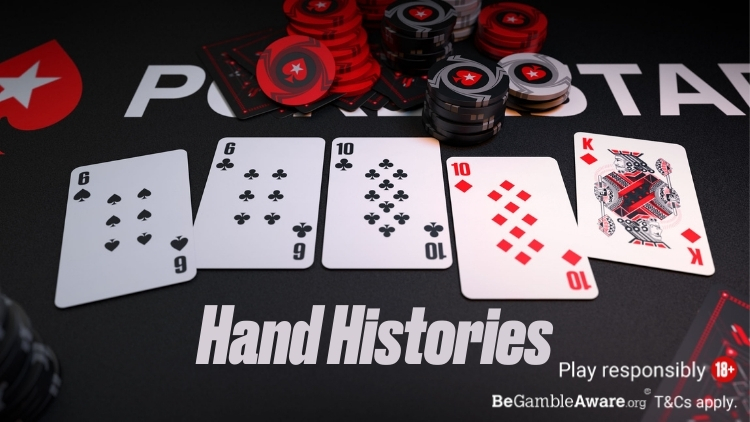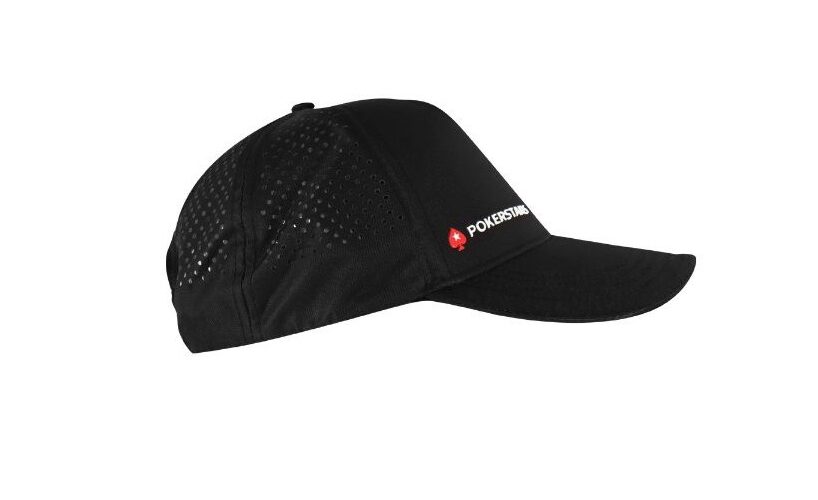You’ve probably heard the saying that those who fail to learn history are doomed to repeat it. The point of the quote is to recommend learning about the past in order to avoid committing the same mistakes over and over again.
The same recommendation certainly applies to poker. If we never look back and review our past errors, we’re likely going to keep committing those same errors going forward.
Reviewing hands you’ve played in a critical manner is always a worthwhile activity. Online poker offers one huge advantage over live poker in this regard — namely, the ability to review your play down to the smallest details thanks to hand histories.
On PokerStars, players can access their hand histories at any time. These are textual accounts of every hand you play. It’s worth knowing both how to locate your hand histories and what to do with them once you do.
Where do I find hand histories in the PokerStars client?
Hand histories are easy to find in the PokerStars client. First, click on “Settings” over on the right side of the main lobby.
Then look down the list on the left and click “Playing History.” You will see two items appear, “Hand History” and “Tournament Summaries.”
Finding your Hand Histories
Under “Hand History,” you’ll see up at the top a box you can click to “Save My Hand History.” From here you can either open the folder or change the location to something else.
You’ll notice the folder is named after your username, and if you look in the folder you’ll see the files are saved as text files (“*txt”).
Some players like to change the folder to the desktop or somewhere else where they can find it quickly. If you know where the folder is on your computer, you can open it and access its contents even when you don’t have the PokerStars client open.
By default, hand histories are kept for 30 days, although you can change that as well to ensure they are saved for longer periods. In this section you can also launch the hand history panel, which shows hand histories collected during your current session.
Finding your Tournament Summaries
Under “Tournament Summaries,” you’ll also see a box to tick that enables you to “Save My Tournament Summaries.” Note that the actual hands you play in tournaments are saved over in your “Hand History” folders. These are just summaries of those tournaments.
These summaries offer general information about tournaments you’ve played, including sit-n-go’s, spin-n-go’s, and other tourney formats. They show the buy-in, the number of players, the prize pool, the top finishers, and where you placed. They can be helpful for the purposes of record-keeping, or if you just want to remind yourself which tournaments you’ve played.
There, too, you can change the folder where the summaries are saved and change the number of days they are kept in your folder. For these saved hand histories and summaries, you can always also copy the text files into another folder on your computer for safekeeping.
By the way, if you change any folder locations or the number of days to keep hand histories or tournament summaries, be sure to click “Apply Changes” before exiting Settings.
Why should I find hand histories in the PokerStars client?
Of course, the next question is why should you bother with hand histories?
Each of these hand histories include every single action in the hand that it chronicles. That includes positions, stack sizes, every fold, check, bet, or raise, and the result of the hand. You’ll be able to see your hole cards and the board cards, too, as well as any other cards shown by your opponents during the hand.
In fact, the hand history also sometimes contains info you might not have seen when playing the hand. If a hand goes to the river and either gets checked down or a final bet gets called, when the hands are shown at the table a losing player might have the option just to muck without showing. However in the hand history that player’s hand is revealed.
So that’s one reason why you should check out the hand histories. There are others, too. Reviewing particular hand histories can help you when analyzing decisions made in key hands, assisting you in getting the details correct (since our memories aren’t always perfect). Being able to see exact stack sizes and betting amounts is incredibly useful in this regard as well.
You can also share the hand history with a friend or coach, showing that person exactly what happened in the hand as you solicit advice.
For large batches of hands, you might load the hand histories into a replayer to make them easier to review. That can help you also identify certain patterns in your play, such as your starting hand selection or other frequencies like how often you play from certain positions or raise preflop, how often you bet or raise postflop, and so on.
PokerStars Learn has a couple of articles in which they discuss ways to use your hand histories advantageously.
In “How to Identify and Fix Poker Leaks,” Dave Roemer talks about the importance of reviewing hand histories and suggests some ways to go about doing so. Also, in “How to Improve at Poker,” Roemer discusses further how you can incorporate hand histories into regular reviews of your play.
Study your history! And use what you’ve learned to make for a better future.
Back to TopView Other Blogs



















